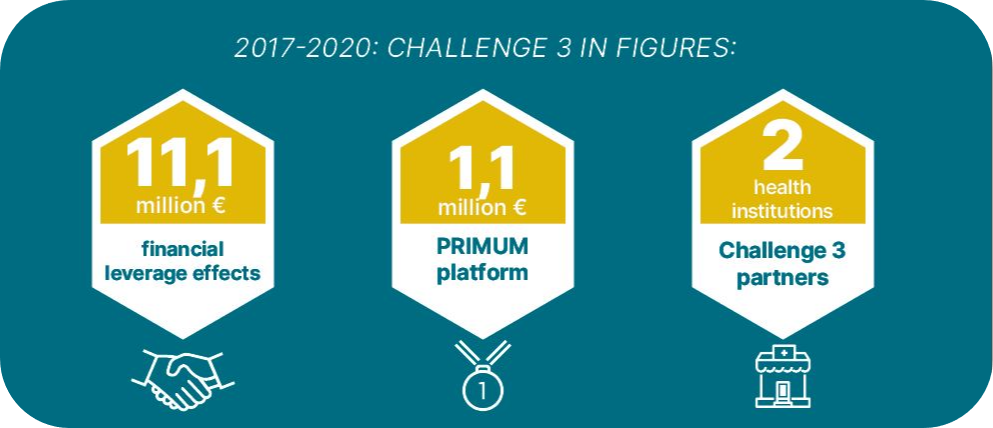International Research Centre 3 : Personalised mobility as a key factor in health
Objective: Analyze the mechanisms driving or impeding individual mobility and propose optimization strategies

Individual mobility is nowadays considered a key factor of human health. Preserving an active locomotor system as long as possible thus has a major influence on the quality of human life as well as on morbidity/mortality. It becomes even more critical with the increased life span and the gradual increase in elderly people suffering from chronic diseases, some of which affect their mobility.
To address the issue of individual mobility, an integrative approach combining exploration of both the muscular system and various intervening factors on locomotor apparatus and function is implemented.
Topics developed by the Clermont-Ferrand joint research units working in the field of biology and health offer the opportunity to develop this approach with originality.
To address the issue of individual mobility, an integrative approach combining exploration of both the muscular system and various intervening factors on locomotor apparatus and function is implemented.
Topics developed by the Clermont-Ferrand joint research units working in the field of biology and health offer the opportunity to develop this approach with originality.
Initial objectives for 2017-2021
1. Support research on the direct and indirect factors of human movement in the following topics:
- Evaluation of metabolic responses to exercise as well as nutritional and hormonal factors associated with impaired mobility in order to identify biomarkers of altered locomotion conditions.
- Muscle development in both normal and pathological situations, with a focus on stem cells for applications in regenerative medicine.
- Evaluation of the pathophysiological mechanisms of pain and dysbiosis in inflammatory and painful diseases affecting mobility (chronic and metabolic diseases).
- Identification of new therapeutic targets: development of new drugs and probiotics.
2. Promoting socio-economic partnerships
3. Promoting local initiatives for a less sedentary and more active lifestyle
3. Promoting local initiatives for a less sedentary and more active lifestyle
Structure
The International Research Center 3 is structured around five major clusters. Key accomplishments since 2017 include:
Research
- 14 associated research units
- 881 publications between 2017 and 2020
- 50 projects supported
Technology Transfer
- 13 patents
- 5 start-ups
Society
Vichy CityLab since 2020Care
Mobility exploration platform involving the Clermont-Ferrand University Hospital, the Jean Perrin Center and the CRNH :- 2019 : 235 patients
- 2021 : 129 patients
- 2022 : 128 patients
- 2023 : 99 patients
Education
Master « Nutrition Health and Mobility » since September 2021Research Units
Next Goals
- Validating new biomarkers associated to physical inactivity or adaptations to exercise in chronic diseases.
- Modeling genetic, cellular or molecular abnormalities in neuromuscular diseases.
- Developing new drugs and nutritional supplements.
- Transfering scientific knowledge in the field of human mobility and involve citizens to promote an healthy lifestyle.
Publications
List of 5 selected publications (2017-2021)
- Martin PY, Doly S, Hamieh AM, Chapuy E, Caale V, Drop M, Chaumont-Dubel S, Bantreil X, Lamaty F, Bojarski AJ, Zajdel P, Eschalier A, Marin P, Courteix C. mTOR activation by constitutively active serotonin 6 receptors as new paradigm in neuropathic pain and its treatment. Prog Neurobiol 2020 ;193 :1018846
- F. Cerqueira Campos, C. Dennis, H. Alegot, C. Fritsch, A. Isabella, P. Pouchin, O. Bardot, S. Horne-Badovinac and V. Mirouse. Oriented basement membrane fibrils provide a memory for F-actin planar polarization via the Dystrophin-Dystroglycan complex during tissue elongation. Development, 2020. vol. 147 (7)
- Aniort J, Stella A, Philipponnet C, Poyet A, Polge C, Claustre A, Combaret L, Béchet D, Attaix D, Boisgard S, Filaire M, Rosset E, Burlet-Schiltz O, Heng AE and Taillandier D (2019). Muscle wasting in patients with end-stage renal disease or early-stage lung cancer: common mechanisms at work. Journal of Cachexia, Sarcopenia and Muscle 2019.10(2):323-337
- Plissonneau C, Capel F, Chassaing B, Dupuit M, Maillard F, Wawrzyniak I, Combaret L, Dutheil F, Etienne M, Mairesse G, Chesneau G, Barnich N, Boisseau N. High-intensity interval training and α-linolenic acid supplementation improve DHA conversion and increase the abundance of gut mucosa-associated beneficial Oscillospira bacteria. Nutrients. 2021 Feb 27;13(3):788
- Busserolles J, Ben Soussia I, Pouchol L, Marie N, Meleine M, Devilliers M, Céline Judon C, Schopp J, Clémenceau L, Poupon L, Chapuy E, Richard S, Noble F, Lesage F, Ducki S, Eschalier A, Lolignier S.TREK1 channel activation as a new analgesic strategy devoid of opioid adverse effects. Br J Pharmacol 2020. Oct;177(20):4782-4795.
The International Research Center 3 is currently developing a strong multi-partner network on the theme of human mobility. This network includes the University of Clermont Auvergne, the Auvergne-Rhône-Alpes region and more broadly the international level. The long-term objective is to enable Clermont-Ferrand to become the European leader in the field of personalized mobility for health.

STEERING COMMITTEE
Director: Pr. Frédéric Costes
- R. Dallel
- S. Faure
- V. Mirouse
- V. Livrelli
- D. Dardevet
- D. Thivel
- A. Buisson
- F. Cachin
- P. Laurent
- A. Tournadre
- M. Duclos
- C. Jagla
- C. Malpuech-Brugère
- L. Etienne-Mesmin
- R. Richard
